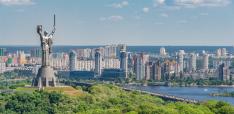Zones Flipped?

Noting recent global trends, Karl Muth encourages cities to consider reversing their current zoned fare structure to reduce the burdens on those that can least afford it.
It may seem strange in a month dominated by the snap, the coalitionmongering, and the theories of what a next budget might look like to focus on such a mundane thing as the fare to ride the Underground and other commuter railways around the world. However, as an intermittent visitor nowadays to London who often rides public transport in other major cities, I can’t help but notice an east-west divide in how city planners and their transport plenary cousins are thinking about commuting post-COVID.
Rail has been a focus of my thought and scholarship in economic development for years; in fact my very first article in Harvard’s Africa Policy Journal dealt with rail (K. Muth, African Infrastructure with Chinese Characteristics, 8 Harv. Kennedy Sch. Africa Pol. J. 52 (2020)). More recently, I’ve written on rail as a symptom of development policy choices and as a feature of midcentury development in the Japanese context. In this blog, however, I want to explore how the intriguing idea of “flipping zones” affects cities.
London has, and has had since the retiring of the tokens and the dawn of the Oyster era, a system wherein a rider will tap in and tap out, thereby allowing the system to compute the distance a rider traveled. The same vendor created a similar system for Hong Kong’s MTR (called Octopus rather than Oyster, perhaps to suit the Chinese preference for all-things-eights-related), though fare zones only exist on the Light Rail unless this has changed since I last departed Hong Kong.
The idea is essentially to implement a low-granularity cost-per-mile system similar to American highway tolls, where people who travel greater distances pay more.
But there is a current policy debate about whether fare zones should be, essentially, reversed in this sense, and whether shorter journeys should subsidize longer ones.
This is not as easy a question to answer as it might seem.
Chicago only recently implemented higher fares on trains to the city from its primary international airport (ORD – O’Hare); prior to this, taking the Blue Line only one stop from Clinton to LaSalle cost just the same as taking the Blue Line a more-than-marathon distance (26.93 miles) from O’Hare Airport to Forest Park. As fare differentiation occurs, questions of fairness inevitably arise.
Let’s look at London’s TfL zoned transit system on the London Underground.
Policy folk have recently debated whether it is actually more equitable in cities like London and Chicago to have fares that reflect the financial means likely possessed by the people experiencing various commutes. For instance, a person earning a small wage in food service might commute in London from Zone 5 to Zone 1 in order to serve food to barristers who work in a Zone 1 office building who live nearby in Zone 2.
The barristers might make ten times the wage of the food service workers in the canteen, but the commute cost is £164.00 monthly for the barrister and £280.40 for the food service worker (computed using monthly travelcard prices; daily cost could be as high as £14.60 for a daily anytime commute from Zone 5 to Zone 1). Needless to say, that £116.40 monthly means a great deal to a low-wage worker’s household.
The idea of the flipped zone regime began in certain cities in Japan.
The concept is that it’s mostly low-wage workers who live on the outskirts of the city and commute to work in the central part of the city. In the modern era, it’s more common for higher-wage workers to live downtown or nearer to their work. Also, the flipped fare regime (higher fares for shorter trips) acts as a tax on tourism (tourists often hop around central London on the Tube, for instance) and encourages walking or cycling short distances.
This also avoids household-level means testing for transit discounts, which can have strange side-effects like misreporting of income, misrepresenting segregation of households, and bullying of children and young adults who receive subsidies. While there are some commutes that will undoubtedly be painted incorrectly by such a broad brush, it is likely the reversal of the current zoned pricing dynamic would be fairer than the status quo.
I would encourage cities where poorer populations (on which central areas rely) live at the edges of the municipality or at the edges of the transit map to at least consider reversing their current zoned fare structure. I further believe cities should consider that cost-per-mile may not be the right metric to apply in cities currently debating higher-resolution tiered fare structures (like Chicago), where the burden of the system’s cost might unintentionally rest on the shoulders of those who can least afford to contribute.
The variable cost per mile of modern light rail is negligible on a per-passenger basis. The main cost in many cities is maintenance and repair of antiquated infrastructure; the second-highest-cost item class stems from inadequate or lumpy service utilization (and the suboptimal operational realities that result). If one considers the merits of lessened automotive congestion and the freedom from a car payment for poor households, the idea of flipping zones becomes even more attractive.
So, policymakers: At least consider that traveling further should perhaps not cost more and, also, that the burden of fare-per-mile light rail pricing policy may be heavier and differently-distributed from what decades-old decisions once intended or envisioned.
Photo by Brett Jordan


